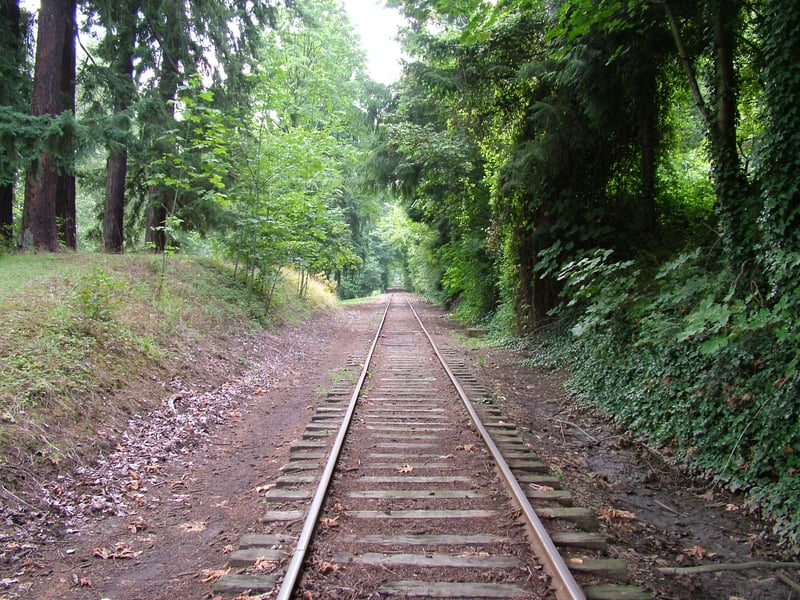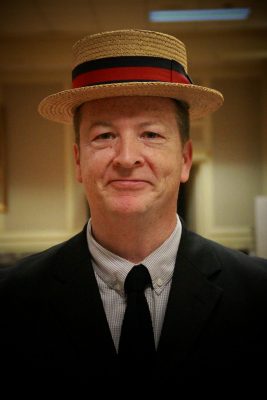 Copyright Joshua Smith 2004 via
FreeImages.com. All rights reserved.
Copyright Joshua Smith 2004 via
FreeImages.com. All rights reserved.
I’m the youngest of nine. My brother Peter Ignatius is the fourth oldest. Built like a longshoreman, with freckled skin and blazing blue eyes, his hair - a flaming red mop in childhood - has mellowed into a wavy burgundy.
Peter is very intense. A sixth grader when we moved from Ft. Wayne, IN to New Haven, CT, he thought he should make an impression his first day at his new school, St. Aedan’s on Alden Avenue. At recess he searched the playground (really the church parking lot) for the biggest, toughest kid in the school. Peter strode up and punched the kid in the gut. He didn't want anybody to mess with him, and nobody did.
He’s always needed an outlet, otherwise he’d kill somebody.
Believe it or not, Peter eventually became a school teacher. And not just a school teacher, but an extraordinary one. For almost two decades, he has taught at Portsmouth Abbey in Rhode Island.
 Photo courtesy Mike Franzman 2013. All rights reserved.
Photo courtesy Mike Franzman 2013. All rights reserved.
The century-old school founded by Benedictines sprawls majestically on 525 acres overlooking Narragansett Bay. The property slopes down into a rocky shore, but not before crossing train tracks that run all along the bay side.
Thirty feet on either side of the tracks belongs to the railroad. The railroad wants to keep the tracks clear, and they are. The property on either side? Not so much. Decades of unfettered growth - compounded by the near-tragic importing of some species of tree from Asia that spreads worse than weeds - left the tracks looking more like an underground tunnel than a shoreline rail. Even worse, it blocks the view of the water closer to the tracks. Right about where Peter lives.
This didn’t bother the railroad. The Abbey, civic-oriented and with more pressing priorities, preferred not to interfere. Imagine riding to the top of the Eiffel Tower and being stuck in a room without windows; that’s how Peter felt.
[Tweet "Imagine riding to the top of the Eiffel Tower and being stuck in a room without windows."]
He could have killed somebody, or at least punched them in the gut. Instead, he got to work.
He began with rebuilding a stone wall straight out of a Frost poem that ran two hundred yards perpendicular to the railroad tracks. Slowly, a little bit at a time, he cleared brush - by hand. I thought him Quixotic whenever I would visit. He’d show me what he’d done, and I could barely see the difference, so vast and unrelenting was the growth.
But Peter kept at it, a little bit at a time, as a blend of therapy and exercise. The difference became noticeable; his efforts, more expert. He studied the growth, observed Mother Nature, adapted his strategy. Over time, his confidence grew as he deployed new tactics more and more effectively.
Now, visiting in late summer, we sit on his back porch as the sun slowly descends. We sip cocktails as the clear sky erupts in vibrant hues of pink, purple and red. Sunlight dances on the water lapping the rocks on shore, clearly visible now across the railroad tracks. Though the war will never end, the fruits of victory taste sweet nonetheless. Peter’s son calls the work his dad’s “happy place.”
St. Josemaría Escrivá insisted that our work become contemplative prayer. When Michelangelo painted the Sistine Chapel, Pope Julius II reportedly pestered him when the chapel would be done. “When I’m finished,” came the reply. What did that work paint on Michelangelo’s soul? Perhaps Wisdom, the first gift of the Holy Spirit.
Aquinas says through Wisdom, not only do we know and assent to revealed truths about God, but we savor them with “a certain tasting of their sweetness.”
Peter is as intense as ever. God gave him a railroad and a choice. He could bemoan his lot, or he could get to work.
What’s your railroad?
Copyright 2016 Kiernan O'Connor
About the Author

Guest
We welcome guest contributors who graciously volunteer their writing for our readers. Please support our guest writers by visiting their sites, purchasing their work, and leaving comments to thank them for sharing their gifts here on CatholicMom.com. To inquire about serving as a guest contributor, contact editor@CatholicMom.com.


.png?width=1806&height=731&name=CatholicMom_hcfm_logo1_pos_871c_2728c%20(002).png)
Comments